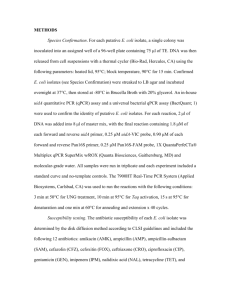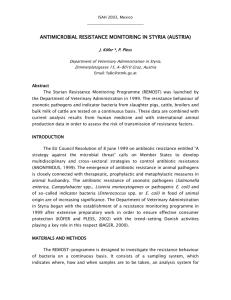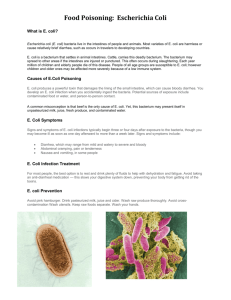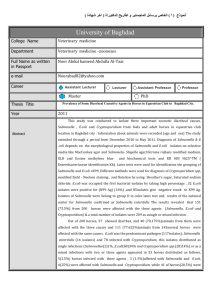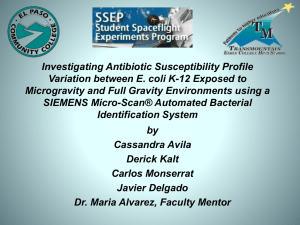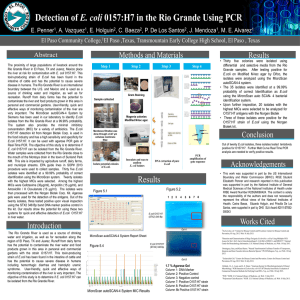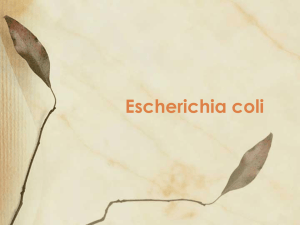MSA DAIRY R & D IN SA_2015-02-21
advertisement
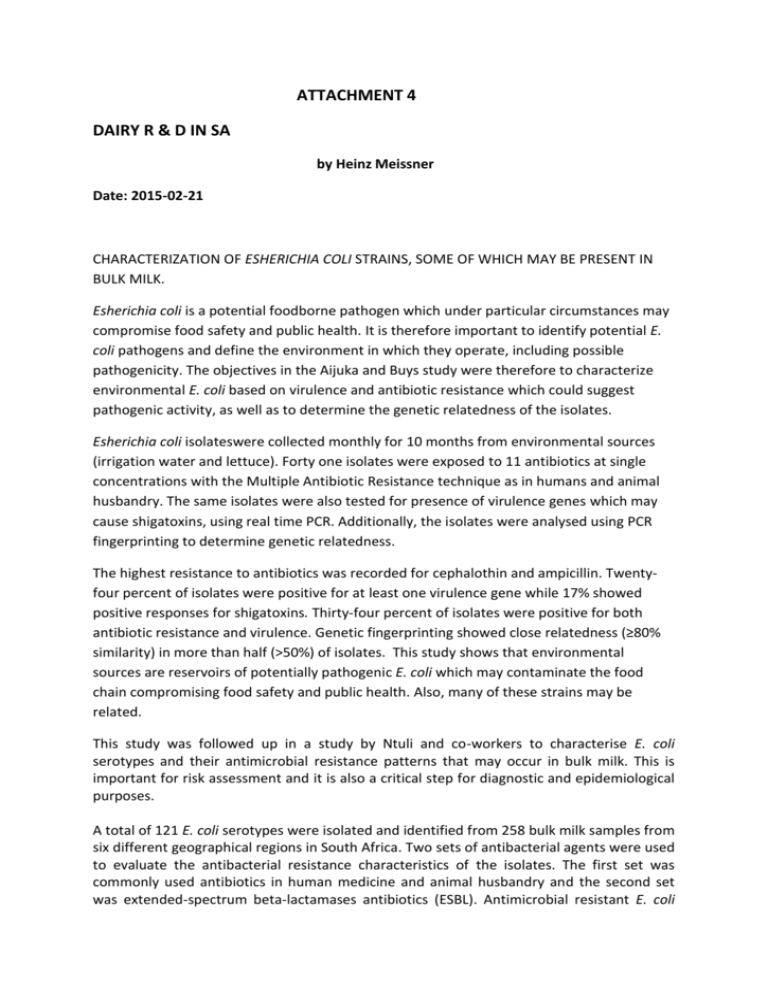
ATTACHMENT 4 DAIRY R & D IN SA by Heinz Meissner Date: 2015-02-21 CHARACTERIZATION OF ESHERICHIA COLI STRAINS, SOME OF WHICH MAY BE PRESENT IN BULK MILK. Esherichia coli is a potential foodborne pathogen which under particular circumstances may compromise food safety and public health. It is therefore important to identify potential E. coli pathogens and define the environment in which they operate, including possible pathogenicity. The objectives in the Aijuka and Buys study were therefore to characterize environmental E. coli based on virulence and antibiotic resistance which could suggest pathogenic activity, as well as to determine the genetic relatedness of the isolates. Esherichia coli isolateswere collected monthly for 10 months from environmental sources (irrigation water and lettuce). Forty one isolates were exposed to 11 antibiotics at single concentrations with the Multiple Antibiotic Resistance technique as in humans and animal husbandry. The same isolates were also tested for presence of virulence genes which may cause shigatoxins, using real time PCR. Additionally, the isolates were analysed using PCR fingerprinting to determine genetic relatedness. The highest resistance to antibiotics was recorded for cephalothin and ampicillin. Twentyfour percent of isolates were positive for at least one virulence gene while 17% showed positive responses for shigatoxins. Thirty-four percent of isolates were positive for both antibiotic resistance and virulence. Genetic fingerprinting showed close relatedness (≥80% similarity) in more than half (>50%) of isolates. This study shows that environmental sources are reservoirs of potentially pathogenic E. coli which may contaminate the food chain compromising food safety and public health. Also, many of these strains may be related. This study was followed up in a study by Ntuli and co-workers to characterise E. coli serotypes and their antimicrobial resistance patterns that may occur in bulk milk. This is important for risk assessment and it is also a critical step for diagnostic and epidemiological purposes. A total of 121 E. coli serotypes were isolated and identified from 258 bulk milk samples from six different geographical regions in South Africa. Two sets of antibacterial agents were used to evaluate the antibacterial resistance characteristics of the isolates. The first set was commonly used antibiotics in human medicine and animal husbandry and the second set was extended-spectrum beta-lactamases antibiotics (ESBL). Antimicrobial resistant E. coli isolates were detected in 70% of the milk samples, of which 36.8% of the pathogenic E. coli showed multi-drug resistance. Presence of ESBL capacity was observed in 20.6% of the isolates. The serotype E. coli O157:H7, which is a dangerous food poisoning organism, was detected in 25.6% of the isolates. The information from this research should be useful in modelling the risk from pathogenic E. coli in bulk milk sold in the informal market in South Africa. References: Aijuka, M. & Buys, E.M., 2014. Characterization of E. coli from South African environmental sources. Proc. of the SASDT Conference 2014, Cape Town. Ntuli, V., Njage, P. & Buys, E.M., 2014. Antibiotic resistance patterns of identified E. coli serotypes in bulk milk. Proc. of the SASDT Conference 2014, Cape Town.

